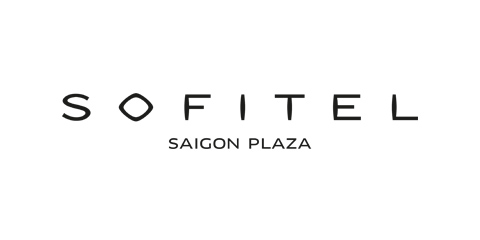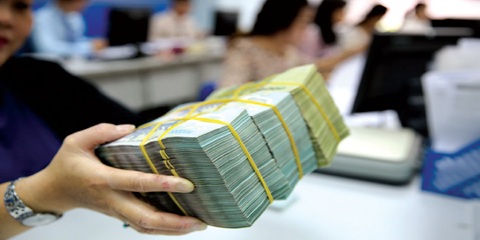Want to be in the loop?
subscribe to
our notification
Business News
CAN STOCKS KEEP MOMENTUMS?
The Vietnamese stock market strongly advanced and become one of the best performers in the world in August when the VN-Index added 10.4%. According to Viet Dragon Securities Corporation (VDSC), August momentum and expected fresh foreign cash flows can help the gauge surpass the 900-point threshold achieved in June and possibly reach 920 points in September 2020.
All economic indicators decline
Industrial growth and retail sales data show that the impact of the second pandemic wave was mixed among sectors. While growth was still seen in a few industries such as pharmaceuticals, rubber, plastic, furniture and electrical equipment and some showed positive progress such as machinery, transportation equipment and apparel, others meanwhile witness slowing growth such as food, metal, paper, textile and chemicals.
In addition, social distancing has helped minimize Covid-19 impacts on retail sales. However, tourism and hotel sectors will continue to see grave difficulty as people prefer not to go outside or on holiday.
According to VDSC, Vietnam’s GDP growth was forecast to increase by 2.5% in the third quarter of 2020 due to a slight increase in production and consumption. Economic recovery will be better in the fourth quarter thanks to selective easing of virus containment measures (such as resuming international flights), better public investment, improved consumer confidence and business sentiment together with the hopes for a Covid vaccine in 2021.
Although the Government managed to control the pandemic, many companies still had to cut jobs and shut down business locations due to the pandemic. According to the General Statistics Office, about 34,300 companies suspended their business operations in the first eight months of the year, up 70.8% over the same period. As more companies shut down and more people lost their jobs, policymakers are considering a second support package to ease negative pandemic impacts on the economy.
According to the Ministry of Labor, Invalids and Social Affairs (MOLISA), only about 28.5% of the first aid package was disbursed by the end of July 2020 (VND17.5 trillion). The low rate of disbursement of the first support package raised questions about the accessibility of affected entities and what measures could be used for the second package. Currently, MOLISA has proposed extending measures used in the first package, including expanding beneficiaries and revising zero-rate loan terms for salary payment by borrowers. In addition, the second support package is aimed to support new affected people (unemployed workers living in difficult circumstances) and focus on promoting confidence of small businesses by providing concessional loans. This support package is estimated at VND18.6 trillion (US$798 million, or 0.31% of GDP), much lower than the first package.
In particular, the budget deficit increased due to excess public investment spending. According to the General Statistics Office, the Government recorded a budget deficit of VND106 trillion (1.8% of GDP) in the first eight months of 2020, in contrast to a surplus of VND97,200 billion in the same period of 2019. As of August 15, 2020, the total budget revenue was VND812.2 trillion, completing 53.7% of the 2020 plan and declining 12.9% over the same period of 2019. Meanwhile, total budget expenditure was estimated at VND918.2 trillion, fulfilling 52.9% of the budget plan but rising 10.0% over the same period of 2019. Notably, development investment spending significantly increased 44.4% over the same period last year and reached 44.3% of the full-year plan) thanks to more rapid deployment of public investment projects in recent months.
While budget fund and GDP growth in 2020 are affected by the Covid-19 crisis, an increase in public investment spending and a bailout fiscal package in the form of tax deferrals, exemptions and reductions could lead to a higher budget deficit. In June 2020, the Ministry of Finance estimated the budget deficit at 5.0-5.1% of GDP. However, based on recent state budget movements and lower GDP growth forecast, the budget deficit in 2020 may be higher than the estimate, at around 5.5-6.0% of GDP.
Rougher September uptrend
According to VDSC, in addition to short-term uptrends in early September, the Vietnamese stock market may better perform when foreign investors are more active following a huge spending from them in early September. While foreign investors kept selling out for many months, a huge amount of fund successfully raised for Vietnam’s markets will be a big boost.
Specifically, before a Taiwan fund raised US$160 million to invest in the Vietnamese market, Dragon Capital also pooled a huge amount of money for VFMVSF Fund of Vietfund Management Company. VFMVSF was estimated to have received about VND1.5 trillion from foreign investors since the end of June. This fund disbursed more than VND1.1 trillion in August alone. Its investment portfolio is mostly high-liquid large-cap stocks. However, the uptrend in September could be bumpier
Besides, the rally is unlikely to be sustained when outstanding margin debt balance also looked up strongly. This will make stock investors more susceptible to negative news, which may come from strong volatility in world stock markets. Most recently, after a series of consecutive days of decline, the VIX Index, a gauge of stock volatility, of the U.S. market rebounded to over 30 points, raising a warning level in the U.S. market. In the past, the U.S. market unexpectedly rallied strongly to create a new record peak, it tended to correct deeply after that. Looking on recent developments, VN-Index movements will not be too positive.
According to the VDSC report, given uncertain economic prospects and falling deposit interest rates, the stock market is becoming more attractive than other investment channels such as gold or real estate, because it does not require a lot of fund to make a deal while liquidity is high. For that reason, not only domestic investors but foreign investors also boosted their investment in stocks although macroeconomic data are not really optimistic. The number of new accounts in August increased by 4.8% over the previous month (to 28,300 accounts), the highest since 2019 (15,000-20,000 accounts per month). In addition, a high outstanding margin loan balance since the end of July showed the current investor excitement with the market (margin loan at the end of the month rose by 40% against June).
Foreign cash flowed into professional funds signified a positive signal to stock indices. Although some of this cash can be disbursed into mid-cap stocks, large-cap stocks are still preferred due to their good fundamentals and transparency. That could push the VN-Index higher in September. When considering P/E ratio in VN30 (blue-chip), VN70 (mid-cap) and VNSML (small-cap) stock baskets, only the VN30 stock P/E is lower than in the past. Meanwhile, although VN70 and VNSML stocks look cheaper than the VN30, they are no longer more attractive when their historical P/E data are taken into consideration. Therefore, VDSC believed that cash flow-following investment strategy of professional funds is still an appropriate option in 2020. Likely rising stocks for the time being may be MWG, VRE, PNJ, KDH, HPG, REE, FPT, VPB and MBB.
Source: VCCI
Related News

A STELLAR CHRISTMAS AT SOFITEL SAIGON PLAZA
Experience the magic of year-end celebrations in five-star luxury, where Parisian elegance meets Saigon’s festive vibrancy. Discover your Stellar Christmas moments: https://sofitel-saigon-plaza.com/festive-offer-2025

CONSTRUCTION SECTOR POSTS OVER 9% GROWTH IN 2025
Industries under the ministry’s management accounted for an estimated 17.23% of national gross domestic product (GDP), up about 0.17 percentage point from 2024. They contributed around 1.96 percentage points to overall GDP growth, reported the Vietnam News Agency. The contribution helped push Vietnam’s economic growth to above 8% in 2025 and supports the Government’s aim of pursuing double-digit growth in the coming years.

VIETNAM PUTS PUBLIC INVESTMENT DISBURSEMENTS AT VND603.6 TRILLION
Vietnam’s public investment disbursements had amounted to VND603.6 trillion in the year to December 18, equivalent to 66.1% of the plan assigned by the prime minister. According to the Ministry of Finance, actual disbursements by December 11 had totaled VND577.7 trillion, or 63.3% of the prime minister-approved plan of VND913.2 trillion, the Vietnam News Agency reported.

SHINE INTO 2026 AT HOIANA RESORT & GOLF!
This New Year’s Eve, celebrate where the sea meets the sky. Vibrant performances, festive dining, DJ beats, live bands and dazzling fireworks come together for one unforgettable night. From beachfront countdown moments to curated New Year’s Eve dinners across Hoiana, every detail is designed to welcome 2026 in style.

VIETNAM’S TRADE SET TO SURPASS US$900 BILLION FOR FIRST TIME
Vietnam’s total import-export turnover is expected to reach about US$920 billion by the end of the year, marking the first time the country’s trade value has exceeded the US$900-billion mark. As of December 15, Vietnam’s total trade turnover stood at US$883.7 billion, according to the Agency of Foreign Trade under the Ministry of Industry and Trade.

GLOBAL SOURCING FAIR VIETNAM 2026 – THE TRULY GLOBAL B2B SOURCING SHOW IN VIETNAM TO EXPAND & DIVERSIFY YOUR EXPORT MARKETS WORLDWIDE
The 4th edition of Global Sourcing Fair Vietnam returns in 2026 with an impressive scale, featuring 700 booths showcasing Fashion & Accessories, Home & Gifts, and the newly introduced Printing & Packaging Products from 500+ verified suppliers across Vietnam and Asia – including Mainland China, Taiwan, Hong Kong SAR, South Korea, India, Bangladesh, ASEAN, and more.
























